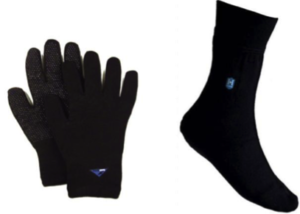Guest post by Manuel Cadaing from Adventure Survival Gear
Hiking is truly one of the best ways to exercise and stay fit. You’ll also see the beauty of nature and breathe fresh air. But you’ll need the right hiking equipment before you go out!
But hiking requires more gear than just going for a walk, and a successful hiking trip requires the right hiking equipment. Start with the most basic essentials, such as water and hiking boots. Then, build from there.
Packing for a hiking trip does not have to be difficult. Just follow the tips in this article and you’re good to go. Never pack more than what you need to.
Hiking Equipment List
These days, hiking is especially enjoyed by both active and athletic young individuals as well as young at heart adults. In fact, more and more people are falling in love with trekking across various terrains for long distances.
If you’re planning a long hiking trip, you’ll need the right gear in place before embarking on your journey. Be sure to pack all the essential hiking equipment without over-packing or leaving out something important.
Here is a comprehensive list of essential gear and equipment that you need on your hiking trip. Also included are helpful tips for the perfect hiking experience during warm weather as well as cold weather.
If you have any questions about the list or the tips, feel free to drop me a comment at the end of this article. I’ll be happy to help you.
Warm Gloves and Socks

One of the most basic items you’ll need for cold-weather hiking and wet conditions are warm gloves and socks. Make sure the gloves are waterproof, but that they also allow your skin to breathe. They must come equipped with gripping material for carrying.
Socks should be made of wool and lightweight enough for your toes to breathe and move comfortably without getting sweaty.
Fleece Jacket

A fleece zip-up jacket is great to have on hand for cool weather. This kind of fabric keeps you warm without feeling heavy, making it easier for you to hike.
Wide-Brimmed Hat
Wide-brimmed hats protect your face from the sun’s dangerous rays and are lightweight and easy to wear.
Footwear

Hiking boots are essential for varied terrain whether hiking in warm weather or cold weather. All good quality hiking boots have great traction prevent slipping and falling. But hiking shoes other characteristics vary based on their usage: some are meant for light hiking and light loads or may even resemble the running shoes while others are meant for a more extensive hiking and heavier load. Choose apporpriate shoes for the type of hiking you’re planning on.
Never skimp on quality when it comes to hiking boots. Make sure they are well made and designed durably to last. Keep in mind that cheap hiking boots will cause more harm than good. The boots could fall apart under frequent wear and you could end up with blisters or other injuries to your feet.
Water and Water Bottle

Enough supply of water is essential when hiking no matter the weather. Make sure to use a water bottle that is made without BPA (Bisphenol A) or a water bladder in your backpack.
Flashlight or Headlamp

Bring a small, lightweight flashlight or headlamp that be easily stored in your backpack in case you end up out after dark.
Fannypack or Backpack


A fanny pack for lightweight hiking or a larger backpack for a more extensive hiking is essential for carrying the hiking equipment you’ll need, such as food and water. For longer hikes, consider a pack with a built-in water bladder.
Food

Bring easy-to-carry snacks for the trail. Choose items such as:
- Trail mix
- Nuts
- Granola bars
- Dried fruits
- Jerky
Freeze dried foods are another good option for longer hikes and they last for years.
First-aid Kit

Another hiking equipment essential is a first aid kit. Hopefully, you never need it. But when you are exploring the great outdoors, you must always be prepared in case an accident or injury happens. Your first aid kit should include:
- Antibiotic packets
- Burn gel
- Wipes
- Gauze
- Bandages
- Eyewash
- Latex-free gloves
- Aspirin
- Ibuprofen
- Scissors
There are also first aid kits for specific situations. For example, if you’ll be hiking in an area where snakes could be present, then you’ll need to carry a snake bite kit.
Learn more about first-aid kits and specialised kits, such as snake bite kits at Wilderness Survival with Snake Bite First-aid and Treatment
Sunscreen

Sunscreen is necessary not just in hot weather, but all year-round. The sun’s harmful rays can cause damage to your skin no matter the temperature. Be sure to pack a sunscreen that offers hours of protection and can protect your skin against UVA and UVB rays. Look for an SPF of 30+ or above.
Insect Repellent
Insect encounters are part of being in nature, but getting bitten can be harmful, or dangerous as Zika cases are appearing in the United States. Choose an insect repellent that is not only safe but also effective. It should be long-lasting and consider DEET for extra protection. This is a strong repellent against biting insects like mosquitoes.
Lip Balm
Chapped lips are never fun on a hike! Bring a high-quality lip balm with SPF protection.
Binoculars
Binoculars are an excellent way to view wildlife and beautiful scenes from afar. With binoculars, you can view birds in the sky or high up in trees. Choose a light pair that stows easily.
Guest post written by Manuel Cadaing, who works for Adventure Survival Gear. The company is one of the top providers for quality, outdoor adventure, and survival gear products to Australia and New Zealand.

